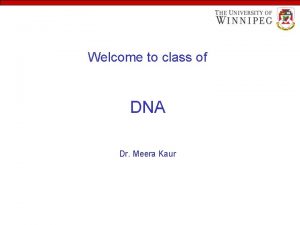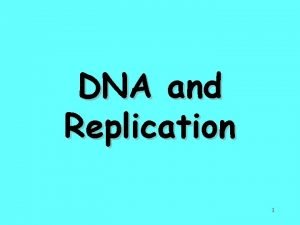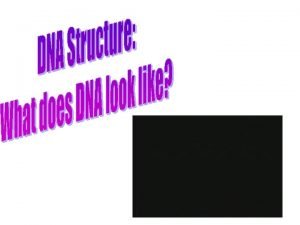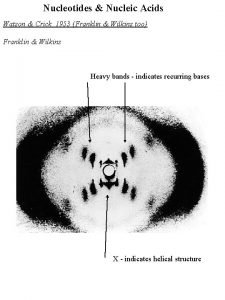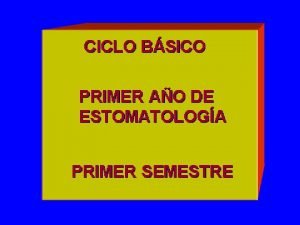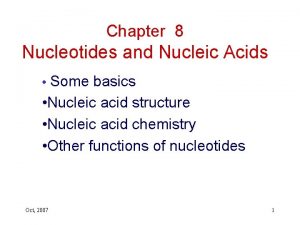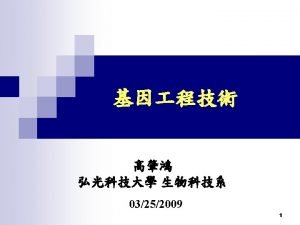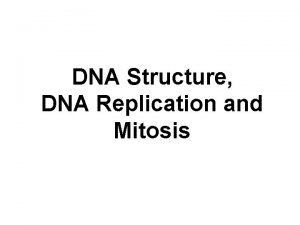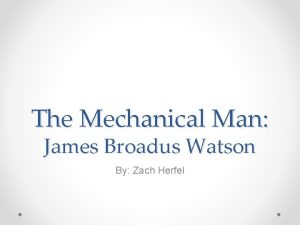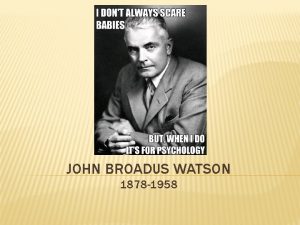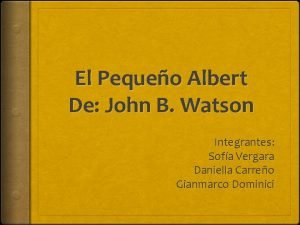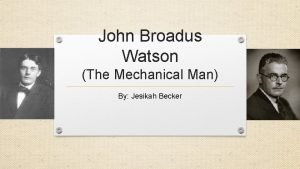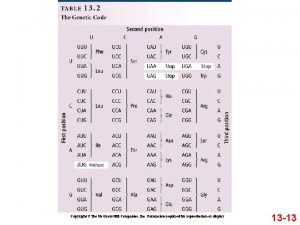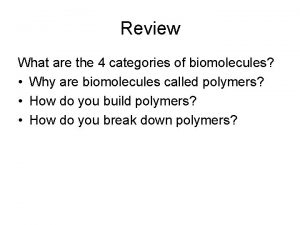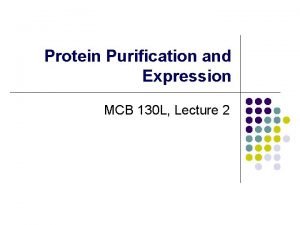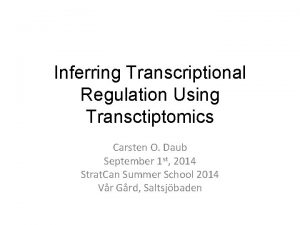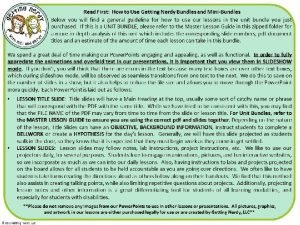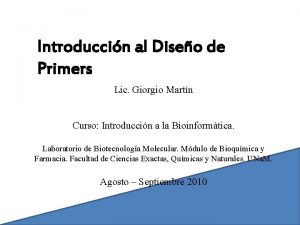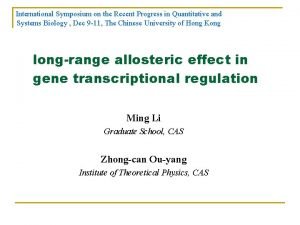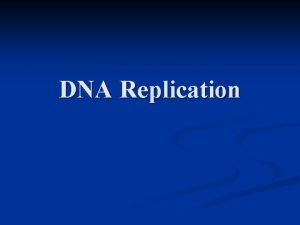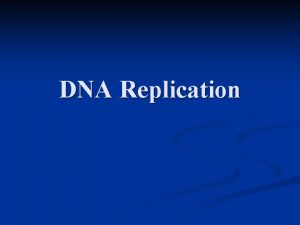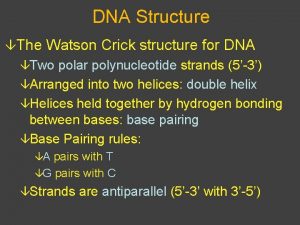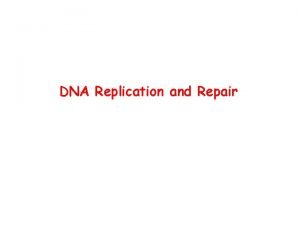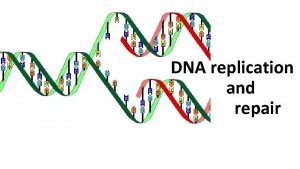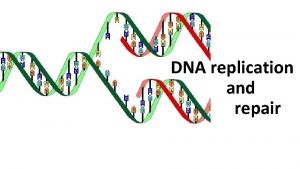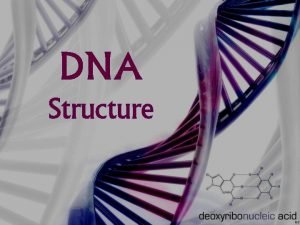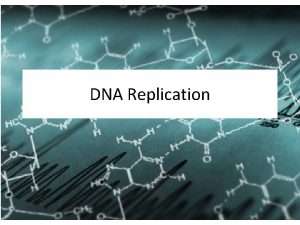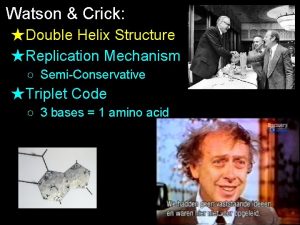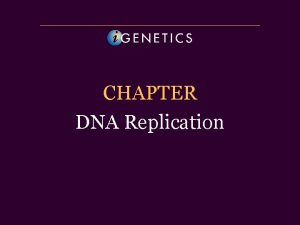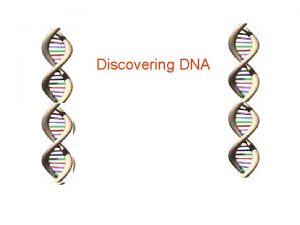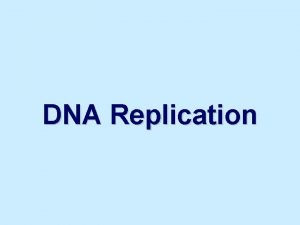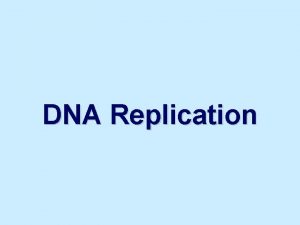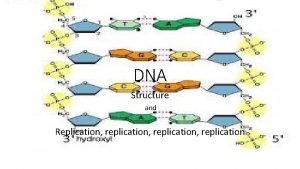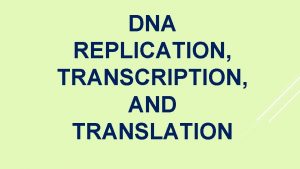DNA Structure And DNA Replication Watson and Crick



























- Slides: 27

DNA Structure And DNA Replication

Watson and Crick Model 1953 article in Nature Watson Crick

Watson and Crick Model • double helix – twisted ladder

Rosalind Franklin (1920 -1958)

DNA – deoxyribonucleic acid • DNA is made of nucleotides • Nucleotides are made of a sugar (deoxyribose), a phosphate, phosphate and a base

There are 4 bases: • Adenine = A • Guanine = G • Thymine = T • Cytosine = C

• sides are composed of alternating molecules of deoxyribose and a phosphate group • rungs composed of pairs of nitrogenous bases with weak H bonds

bases pair up in a pattern a purine with a pyrimidine adenine pairs with thymine A-T guanine pairs with cytosine G-C

WHAT IS THE COMPLEMENTARY STRAND OF DNA? A - _____ C - _____ T - _____ C - _____ G - _____ C - _____ T - _____ G - _____


What is your genetic code? • Nucleotides can appear in any order or sequence. • This sequence of nucleotides controls the production of a protein. • This sequence is known as our genetic code

• DNA is found in all organisms. • It has the same structure, however, it varies in amount per species and the sequence of the bases. • Genes are made up of nucleotides and code for the formation of a polypeptide or protein.

The “Central Dogma” • Flow of genetic information in a cell transcription DNA replication RNA translation protein


DNA Replication

1. Where is DNA located in the cell? 2. When is DNA copied? 3. Why is DNA copied?

DNA must replicate before cell division, so that each daughter cell will have an exact copy of the genetic code.

DNA Replication Steps: 1. H bonds between bases are broken by enzymes 2. DNA unzips 3. new nucleotides attach to both sides of original DNA • Each new molecule of DNA will have one original strand one new strand of DNA

RNA Ribonucleic Acid

RNA • does the work for DNA during protein synthesis • serves as a messenger between DNA and the ribosomes


RNA Structure: • made of nucleotides • contains the sugar ribose • contains uracil instead of thymine A pairs with U • single stranded molecule

3 Types of RNA 1. m. RNA - messenger RNA: RNA carries the sequence of nucleotides to the ribosome 2. r. RNA - ribosomal RNA: makes up a large part of the ribosome 3. t. RNA - Transfer RNA: picks of amino acid in the cytoplasm and carries it to the ribosome

Codons and Anticodons • Every 3 bases of m. RNA is a codon • A codon codes for a specific amino acid.

• There are more cordons than amino acids (20). • Several different codons can code for the same amino acid or they may be terminator codons, codons which signal the end of protein synthesis.

Animo acid GCA 3 rd base 2 nd base 1 st base in codon

• Anticodons are found on t. RNA and are complimentary to m. RNA codons. • Terminator codons do not have an anticodon and therefor, no t. RNA.
 Watson and crick model of dna
Watson and crick model of dna Bioflix activity dna replication lagging strand synthesis
Bioflix activity dna replication lagging strand synthesis Watson and crick thieves
Watson and crick thieves Watson-crick
Watson-crick Dna a
Dna a Polisacaridos extracelulares
Polisacaridos extracelulares Watson health francisco 1b
Watson health francisco 1b Phosphoanhydride bond
Phosphoanhydride bond Watson strand crick strand
Watson strand crick strand Replication
Replication Dna and genes chapter 11
Dna and genes chapter 11 Forms of dna
Forms of dna Multiple choice questions on dna structure and replication
Multiple choice questions on dna structure and replication Nature of dna replication
Nature of dna replication John b. watson james broadus watson
John b. watson james broadus watson John broadus watson emma watson
John broadus watson emma watson Experimento de watson
Experimento de watson John b. watson emma watson
John b. watson emma watson Dna replication transcription and translation
Dna replication transcription and translation Francis crick nationality
Francis crick nationality Enzyme
Enzyme Nitrogen base
Nitrogen base Differential centrifugation
Differential centrifugation Francis crick
Francis crick Francis crick
Francis crick Primers degenerados
Primers degenerados Smar crick
Smar crick Smrt crick
Smrt crick
